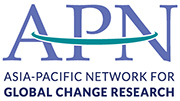Climate-related hazards are evident not just in case of low-probability high-consequence events but also for high-probability low-consequence events, which lead to recurrent impacts and recurrent costs of adaptation. The coastal cities of South and South East Asia are acutely vulnerable to heavy precipitation, sea-level rise, cyclones and typhoons. The cities face frequent weather events related to heavy precipitation resulting in flash floods, loss of life and property, heavy damages to infrastructure and disruption of economic and social services. In light of this, it is critical to assess the vulnerabilities and adaptation strategies used by the coastal cities to cope with future climate risks. The existing literature on adaptation measures and their typology focuses on the widely used public or institutional adaptation measures. However, the private stakeholders like households and commercial/industrial establishments also undertake adaptation measures that need to be characterized to understand their costs, burden on the stakeholders and effectiveness in enhancing adaptive capacity. This study characterizes public and private adaptation measures in the three cities, Mumbai (India), Bangkok (Thailand) and Manila (Philippines) by using primary data gathered from households and commercial/industrial establishments and secondary data obtained from government entities and also evaluate their effectiveness and contribution to long-term resilience.
Project leader
Collaborators
Project publications

Co-designing Disaster Risk Reduction Solutions: Towards participatory action and communication in science, technology and academia

Shockwaves: Managing the Impacts of Climate Change on Poverty

Impacts of natural disasters on households and small businesses in India
Drought and Urbanization: The Case of the Philippines
Quantifying resilience to flooding among households and local government units using system dynamics: a case study in Metro Manila
Prosperity and Inequality in Metro Manila: Reflections on Housing the Poor, Climate Risk, and Governance of Cities

